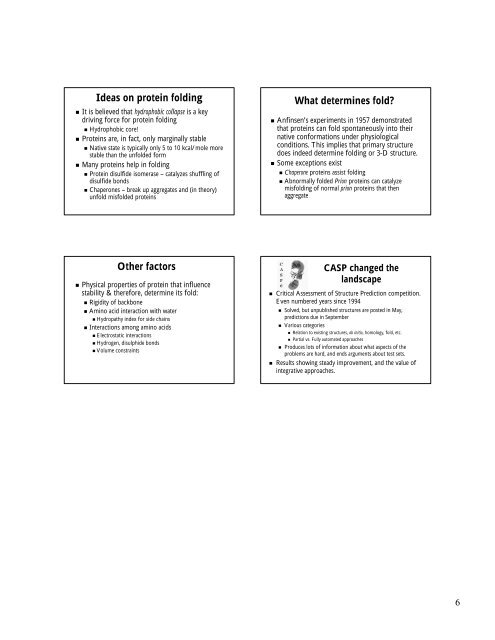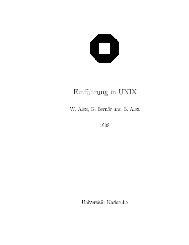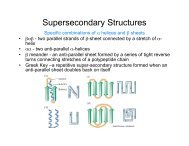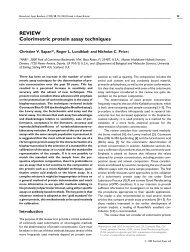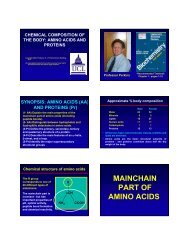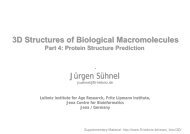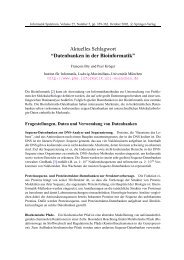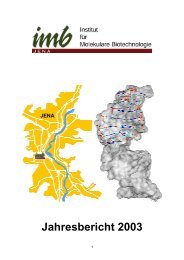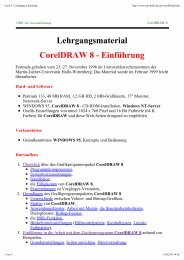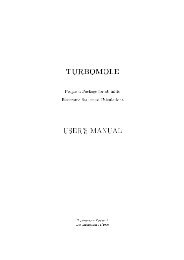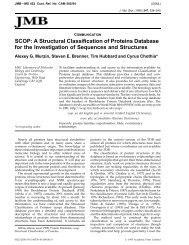Protein Classification and Structure Prediction Amino acid ...
Protein Classification and Structure Prediction Amino acid ...
Protein Classification and Structure Prediction Amino acid ...
You also want an ePaper? Increase the reach of your titles
YUMPU automatically turns print PDFs into web optimized ePapers that Google loves.
Ideas on protein folding<br />
• It is believed that hydrophobic collapse is a key<br />
driving force for protein folding<br />
• Hydrophobic core!<br />
• <strong>Protein</strong>s are, in fact, only marginally stable<br />
• Native state is typically only 5 to 10 kcal/mole more<br />
stable than the unfolded form<br />
• Many proteins help in folding<br />
• <strong>Protein</strong> disulfide isomerase – catalyzes shuffling of<br />
disulfide bonds<br />
• Chaperones – break up aggregates <strong>and</strong> (in theory)<br />
unfold misfolded proteins<br />
What determines fold?<br />
• Anfinsen’s experiments in 1957 demonstrated<br />
that proteins can fold spontaneously into their<br />
native conformations under physiological<br />
conditions. This implies that primary structure<br />
does indeed determine folding or 3-D 3 D structure.<br />
• Some exceptions exist<br />
• Chaperone proteins assist folding<br />
• Abnormally folded Prion proteins can catalyze<br />
misfolding of normal prion proteins that then<br />
aggregate<br />
Other factors<br />
• Physical properties of protein that influence<br />
stability & therefore, determine its fold:<br />
• Rigidity of backbone<br />
• <strong>Amino</strong> <strong>acid</strong> interaction with water<br />
• Hydropathy index for side chains<br />
• Interactions among amino <strong>acid</strong>s<br />
• Electrostatic interactions<br />
• Hydrogen, disulphide bonds<br />
• Volume constraints<br />
CASP changed the<br />
l<strong>and</strong>scape<br />
• Critical Assessment of <strong>Structure</strong> <strong>Prediction</strong> competition.<br />
Even numbered years since 1994<br />
• Solved, but unpublished structures are posted in May,<br />
predictions due in September<br />
• Various categories<br />
• Relation to existing structures, ab initio, , homology, fold, etc.<br />
• Partial vs. Fully automated approaches<br />
• Produces lots of information about what aspects of the<br />
problems are hard, <strong>and</strong> ends arguments about test sets.<br />
• Results showing steady improvement, <strong>and</strong> the value of<br />
integrative approaches.<br />
6


